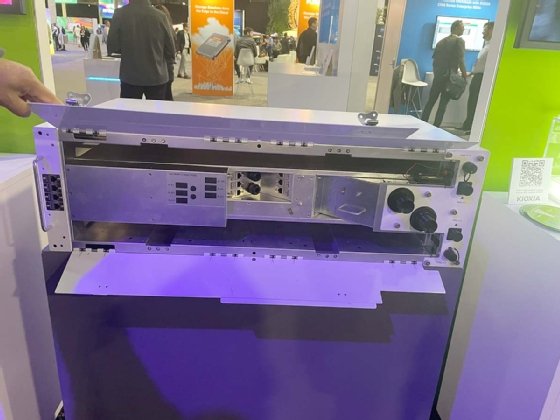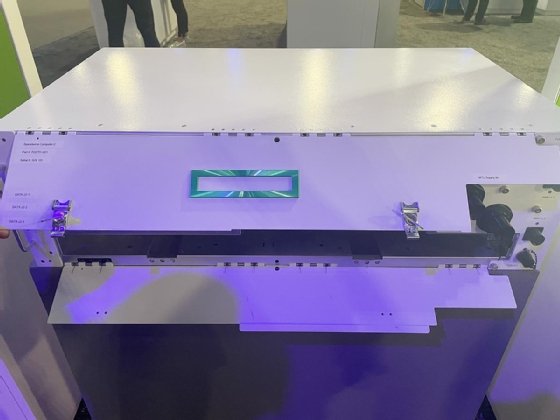
Getty Images
Storage in space? The data's already there
As research and businesses become more established in space, data storage needs are growing. Vendors are building for the otherworldly conditions and keeping an eye on the moon.
The commercial space economy may be currently focused on telecommunications and satellite internet connections, but space stations and lunar bases are coming. For storage vendors, however, this new economy also poses new problems, such as extensive latency due to the spatial distance between the Earth and locations beyond it, which could slow down insights and increase costs.
At any edge location, massive amounts of data can be generated. But the cost of moving that data or the technology that houses it around can't exceed the value of the research itself, according to Mark Fernandez, principal investigator for HPE's Spaceborne Computer-2. A collaboration with NASA, the project brings a supercomputer underpinned by Kioxia SSDs to the International Space Station (ISS) for scientific experiments.
"You're only interested in the insight. In order for you to do the edge processing, you'll have to be able to store the large, raw data," Fernandez said.
Just sending the results, which is a small fraction of the size of the raw data, lowers costs. But the right type and amount of storage needs to be present in space, Fernandez said.
SSDs bring light weight, high density to space
Space introduces new challenges for storage vendors, such as building for extreme environments unprotected by Earth's atmosphere.
They must consider several factors, including the weight and footprint of the technology. SSDs provide the best advantage in terms of weight and density, according to Sebastian Jean, CTO of Phison, a maker of SSDs. Other media, such as HDDs, are bulkier and heavier to transport from Earth to locations in space, and the cost -- currently at $1,500 per kilogram, according to McKinsey & Co. -- must be considered, he said.
SSDs built for Earth may not perform the best in the environmental conditions space poses, where extreme environmental conditions will affect storage performance, according to Jim Handy, general director and semiconductor analyst at Objective Analysis.
Radiation, which is plentiful in space and on the moon, is one such example. "NAND bits are electrons stored on a floating gate," he said. "If radiation passes through the floating gate, it drags electrons out," affecting storage's read/write ability, he added.
Space also presents harsh temperatures that come from a lack of atmosphere, Handy said.

Space cases and use cases
Jean said his company has overcome these issues by adding a thin polypropylene shielding around the drive, giving it low weight protection.
Before the end of 2023, Phison SSDs may be headed to the moon in a proof-of-concept lunar data center funded by Lonestar Data Holdings, a startup that raised $5 million in seed funding in March. The lunar data center provides IT infrastructure for any research conducted on the moon, which could minimize complexity for exploration. But Jean believes it could also act as a backup or archive for research conducted close to the moon.
While Phison looks toward the moon, HPE is sending SSDs a little closer to Earth: the ISS. HPE selected Kioxia SSDs, including the RM SAS series and the client XG series, for its Spaceborne Computer-2, which launched in 2021. Cameron Brett, senior director of enterprise and cloud storage marketing at HPE, said the vendor selected SSDs for reasons beyond low weight. They are also denser, higher performant and have no moving parts.
The lack of moving parts answers a technical safety question that isn't thought of with deploying HDDs in data centers on Earth, HPE's Fernandez said.
"You have to do an analysis and test the angular momentum generated by that spinning disk and determine that it can safely operate on the space station and not throw it off track," he said.
HPE believes commercial space usage is coming soon. Currently the Spaceborne Computer is used for research such as DNA sequencing, to monitor health of astronauts and look for hazards on the ISS, and image analysis of equipment wear, Fernandez said. But as with most things HPE, there will soon be an as-a-service offering that would charge by the workload.
Spaceborne could be used to look for illegal shipping across the ocean or natural disasters such as initial lighting strikes that turn into forest fires, according to Fernandez.
"Anything with image processing and feature extraction," he said.
HPE also has plans to go to the moon, Fernandez said. Once there, it would have a separate location for backup and archive like what Lonestar is proposing. Data that needs to be retained for long periods of time would be sent back to Earth as it would not be cost efficient to store it in space, he said.

Updates and data protection in space
With the latency-causing distance, firmware updates can become an issue. Instead of entire OS or BIOS updates, HPE is using more of a patch system. Like moving just the insights rather than all of the raw data, smaller patches are used as it is less data to move and a lower cost, Fernandez says.
While the distance makes updates more difficult, it does ease security and data protection.
"There is no internet to hack and no speedy way to access or infect this data," Jean said.
Aside from NASA and HPE's security, users can also add the encryption they feel necessary for the workloads they are doing, Fernandez said.
Adam Armstrong is a TechTarget Editorial news writer covering file and block storage hardware and private clouds. He previously worked at StorageReview.com.








